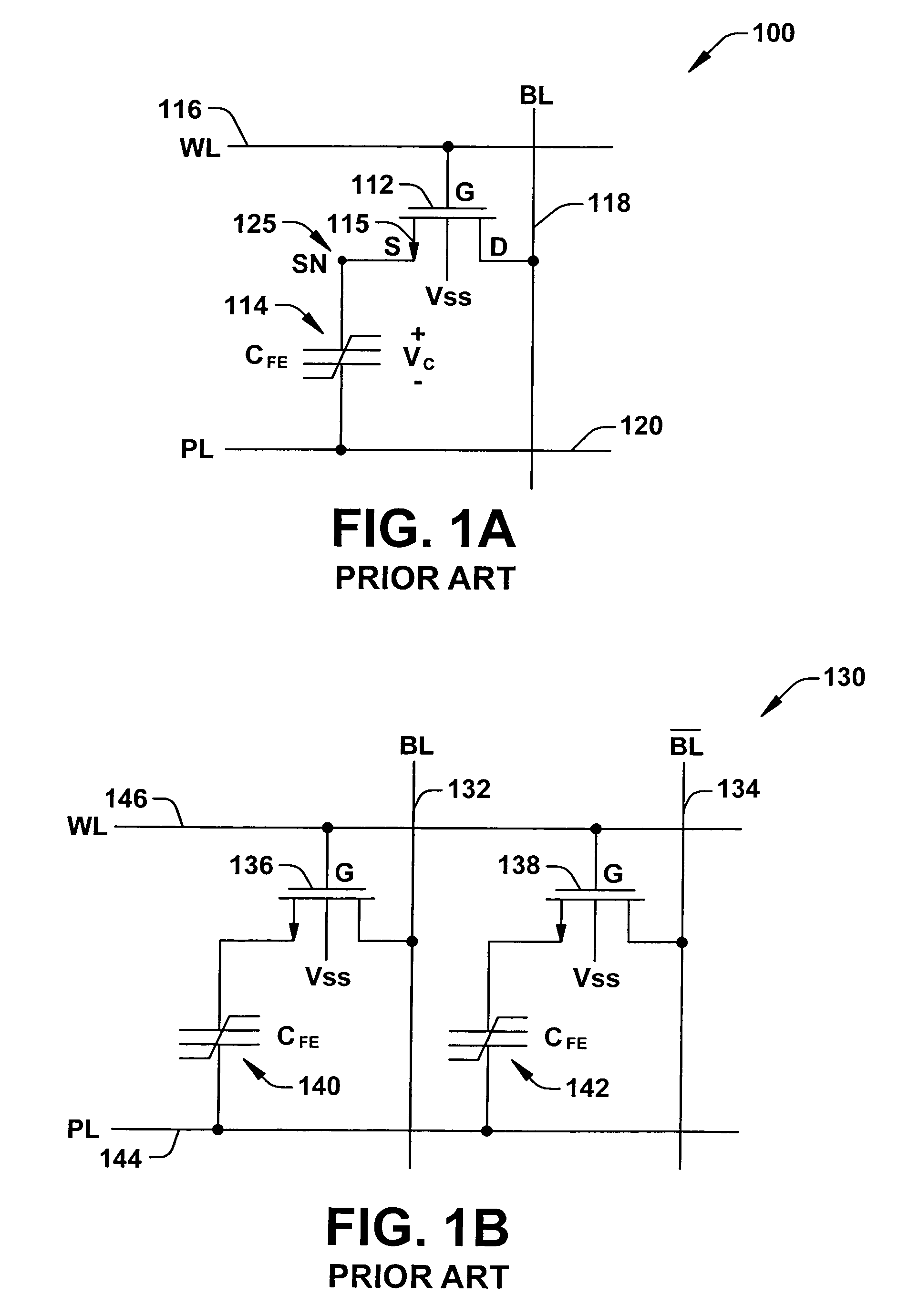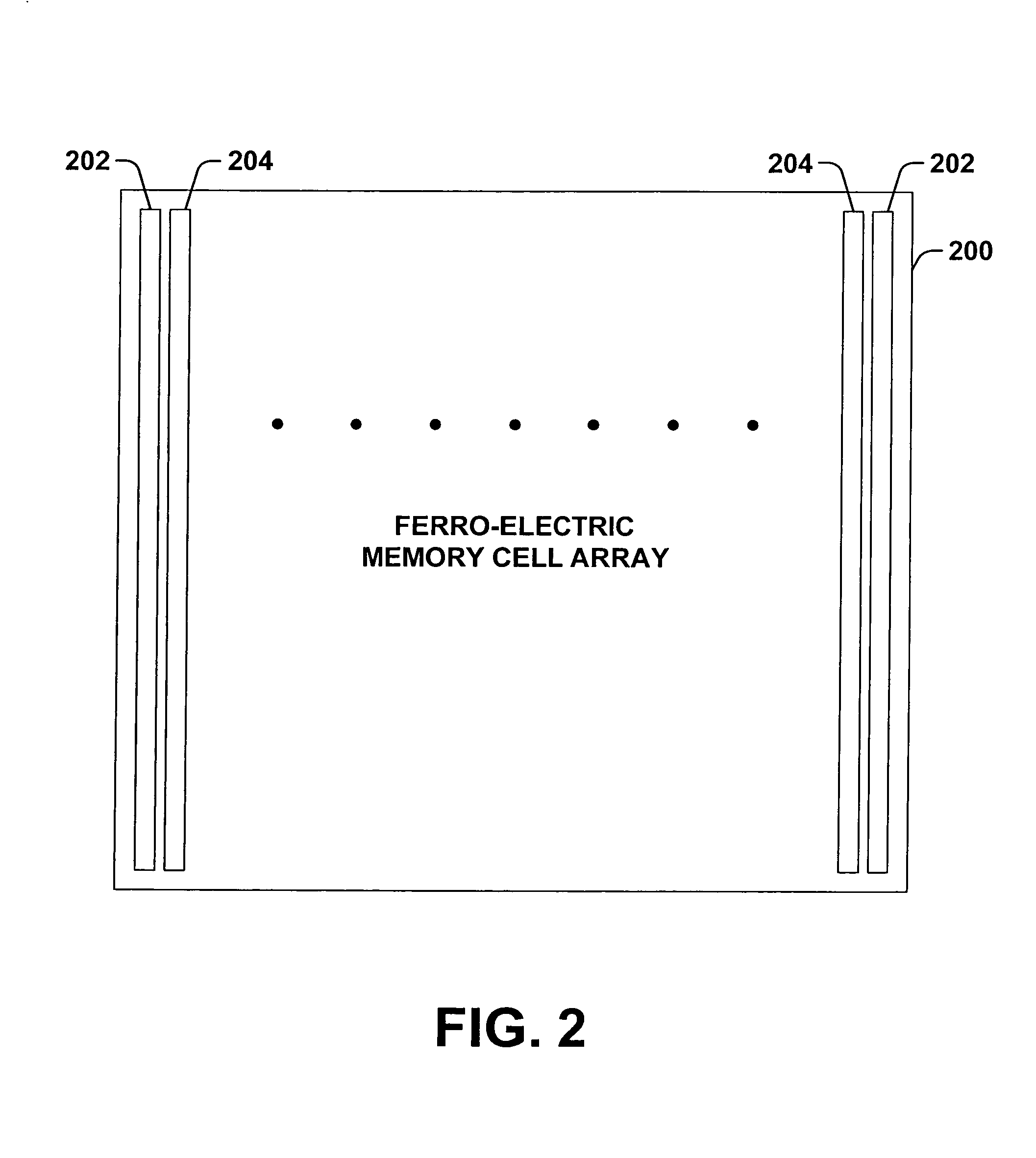Low resistance plate line bus architecture
a low-resistance, bus-based technology, applied in the field of memory devices, can solve problems such as particularly likely and problematic situations, and achieve the effects of reducing the resistance of the plate line, reducing the magnitude of negative spikes, and saving chip area
- Summary
- Abstract
- Description
- Claims
- Application Information
AI Technical Summary
Benefits of technology
Problems solved by technology
Method used
Image
Examples
Embodiment Construction
[0041]The present invention will now be described with reference to the attached drawings, wherein like reference numerals are used to refer to like elements throughout. The invention provides an improved FeRAM memory array and other such memory devices having a common plate line connection to provide a reduced plate line resistance. The lower plate line resistance reduces the magnitude of negative spikes on the plate line during write operations to reduce the potential for FeCap depolarization, for example, when writing a ZERO state to one cell while writing a ONE to a significant number of other cells along an associated plate line. The resistance of the plate lines running in a row or word line direction, in accordance with the present invention, may be lowered by adding one or more plate line cross-connections (interconnections) in the column or bit line direction, thereby shorting between the plate lines of adjacent cells of the column. Two or more plate lines of one or more co...
PUM
 Login to View More
Login to View More Abstract
Description
Claims
Application Information
 Login to View More
Login to View More - R&D
- Intellectual Property
- Life Sciences
- Materials
- Tech Scout
- Unparalleled Data Quality
- Higher Quality Content
- 60% Fewer Hallucinations
Browse by: Latest US Patents, China's latest patents, Technical Efficacy Thesaurus, Application Domain, Technology Topic, Popular Technical Reports.
© 2025 PatSnap. All rights reserved.Legal|Privacy policy|Modern Slavery Act Transparency Statement|Sitemap|About US| Contact US: help@patsnap.com



